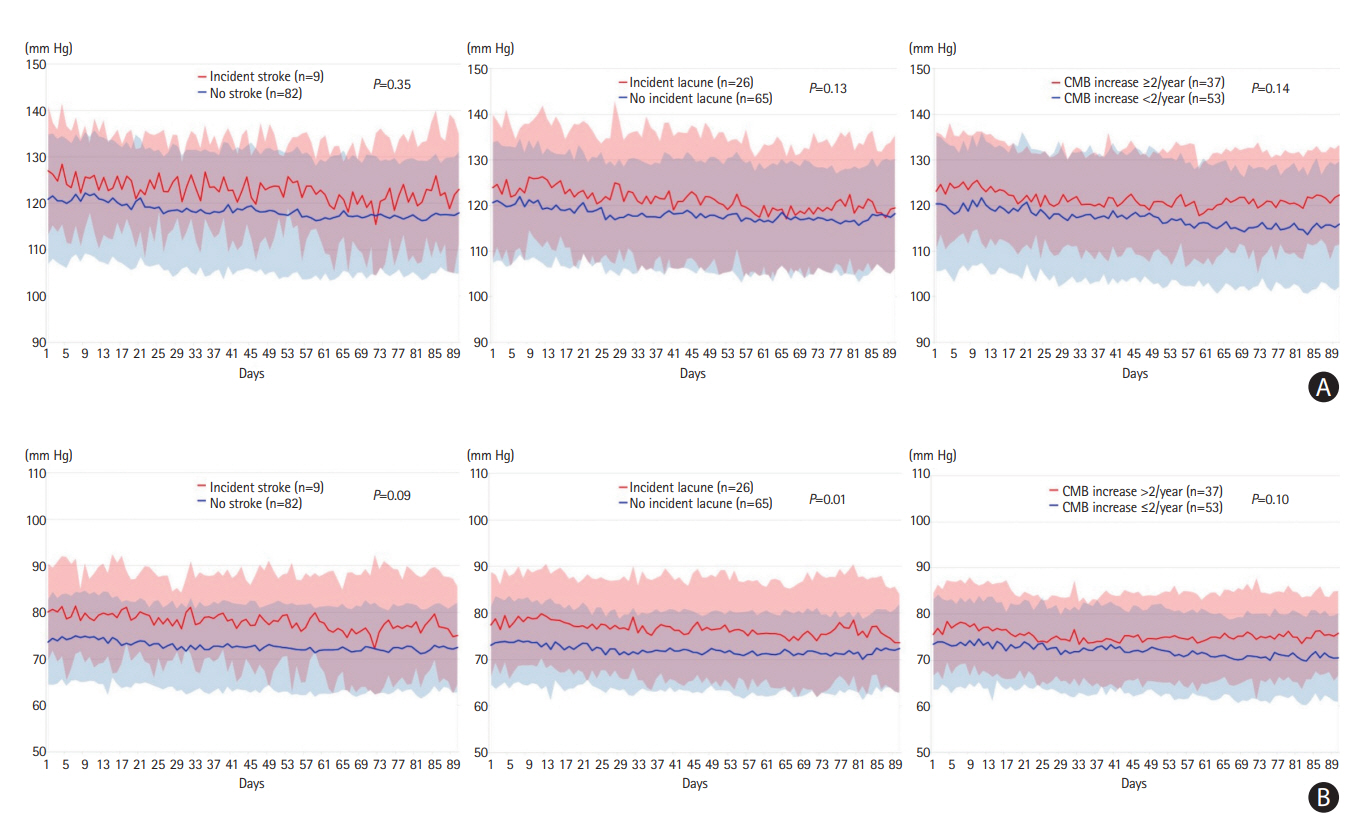J Stroke.
2024 Jan;26(1):112-115. 10.5853/jos.2023.02880.
High Daily Diastolic Blood Pressure Predicts Incident Stroke, Lacune, and Cerebral Microbleeds in CADASIL
- Affiliations
-
- 1Department of Neurology, National Taiwan University Hospital, Taipei, Taiwan
- 2Department of Neurology, Taipei Veterans General Hospital, Taipei, Taiwan
- 3Department of Neurology, National Yang Ming Chiao Tung University School of Medicine, Taipei, Taiwan
- 4Brain Research Center, National Yang Ming Chiao Tung University, Taipei, Taiwan
- KMID: 2551354
- DOI: http://doi.org/10.5853/jos.2023.02880
Figure
Reference
-
References
1. Klarenbeek P, van Oostenbrugge RJ, Rouhl RP, Knottnerus IL, Staals J. Ambulatory blood pressure in patients with lacunar stroke: association with total MRI burden of cerebral small vessel disease. Stroke. 2013; 44:2995–2999.2. Ma Y, Song A, Viswanathan A, Blacker D, Vernooij MW, Hofman A, et al. Blood pressure variability and cerebral small vessel disease: a systematic review and meta-analysis of population-based cohorts. Stroke. 2020; 51:82–89.3. Pantoni L. Cerebral small vessel disease: from pathogenesis and clinical characteristics to therapeutic challenges. Lancet Neurol. 2010; 9:689–701.4. Holtmannspötter M, Peters N, Opherk C, Martin D, Herzog J, Brückmann H, et al. Diffusion magnetic resonance histograms as a surrogate marker and predictor of disease progression in CADASIL: a two-year follow-up study. Stroke. 2005; 36:2559–2565.5. Peters N, Holtmannspötter M, Opherk C, Gschwendtner A, Herzog J, Sämann P, et al. Brain volume changes in CADASIL: a serial MRI study in pure subcortical ischemic vascular disease. Neurology. 2006; 66:1517–1522.6. Viswanathan A, Guichard JP, Gschwendtner A, Buffon F, Cumurcuic R, Boutron C, et al. Blood pressure and haemoglobin A1c are associated with microhaemorrhage in CADASIL: a two-centre cohort study. Brain. 2006; 129:2375–2383.7. Wardlaw JM, Smith EE, Biessels GJ, Cordonnier C, Fazekas F, Frayne R, et al. Neuroimaging standards for research into small vessel disease and its contribution to ageing and neurodegeneration. Lancet Neurol. 2013; 12:822–838.8. Huang M, Long L, Tan L, Shen A, Deng M, Peng Y, et al. Isolated diastolic hypertension and risk of cardiovascular events: a systematic review and meta-analysis of cohort studies with 489,814 participants. Front Cardiovasc Med. 2022; 8:810105.9. Flint AC, Conell C, Ren X, Banki NM, Chan SL, Rao VA, et al. Effect of systolic and diastolic blood pressure on cardiovascular outcomes. N Engl J Med. 2019; 381:243–251.10. Zhang D, Tang Y, Ge J, Liu Y, Jin J, He M. Age and diastolic blood pressure play an important role in the progression of white matter lesions: a meta-analysis. Eur Neurol. 2020; 83:351–359.
- Full Text Links
- Actions
-
Cited
- CITED
-
- Close
- Share
- Similar articles
-
- Clinical and MRI Profiles Predicting Clinical Overt Stroke in Patients with CADASIL
- Anesthetic management of a patient with CADASIL syndrome: A case report
- The Association Between Hypertension and Cerebral Microbleeds in Patients With CADASIL
- Cerebral Microbleeds are Associated with Nocturnal Hypertension in Hypertensive Stroke Patients
- Cerebral Autosomal Dominant Arteriopathy with Subcortical Infarcts and Leukoencephalopathy: A Genetic Cause of Cerebral Small Vessel Disease


